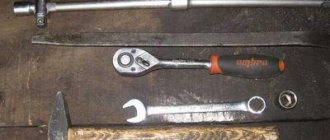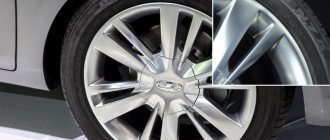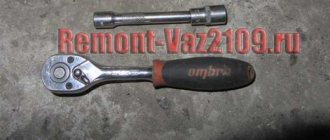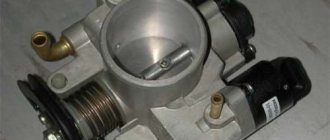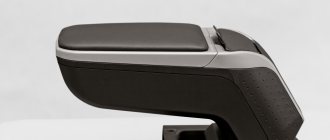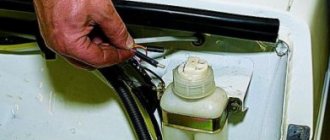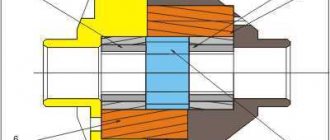The car body is a part that requires care and careful handling. Sloppy driving, poor quality roads and other factors often cause defects in the paintwork of a car. The appearance of small chips in the paintwork requires repair because it spoils the appearance of the car and causes further damage. For this reason, drivers sometimes need information on how to remove chips on the car body.
Causes and consequences of chips
No car owner is insured against damage to the paintwork. In addition to careless driving, chips on a car appear for the following reasons:
- unfavorable weather conditions - hail, temperature changes;
- road covered with crushed stone;
- insects crashing into a car at full speed;
- carelessness of others, physical damage;
- improper car washing.
The car owner does not notice the formation of small paint chips. Only a careful examination of the body after the trip and cleaning the car of dirt helps to find possible defects. If they are detected, it is advisable to repair the body as quickly as possible. Leaving minor damage unattended can have consequences.
Microdamages violate the integrity of the paintwork and cause further corrosion, and an increase in the defect area will make repairs expensive. While waiting, the situation will worsen when the body begins to rust. Damaged paint will not be able to prevent the oxidation of the metal. In this case, the car body will require lengthy and costly professional repairs.
Restoring paintwork using chemistry
Polymerization of acrylics, even the fastest ones, lasts about 20 - 30 days, and the evaporation of solvents from many other materials is possible even longer. You can polish the car body after a couple of hours after it has completely dried, and it is advisable to use chemicals no earlier than after one to two months. After this time, the driver can already use the following aggressive substances against pollutants:
- damage to the paintwork by cement or slaked lime - treatment with vinegar, rinsing with water, polishing and treatment with protective polish;
- drops of resin - use a resin remover;
- industrial dust, which is very difficult to remove after just a couple of days - it is possible to remove fresh stains with a special product;
- damage to the paintwork by brake fluid - restore shine with polishes, and the swelling will be eliminated by drying for an hour (an oven or an infrared emitter can be used at a temperature of - 60 ° C);
- oxidation of paintwork from bird droppings - grinding the top layer, polishing with subsequent application of protection;
- insect residues – removing insect residues with an insect remover, then repeatedly degreasing the surface with a product containing alcohol. Finishing – cover the varnish layer with hard mastic;
- Battery acid can be removed with a simple car cleaner.
From the list above it can be seen that each chemical product has its own neutralizer. For example, traces of wood resins can be removed with kerosene and similar substances, and swelling of the paintwork can be removed by heating the car, and solid mastics are used for final fixation. It’s a different matter if the damage is mechanical or the shine is lost after a while - this problem can be solved by polishing. The shine can be restored without pre-polishing, but often defects can only be eliminated by mechanical processing.
Types of chips and paint coating arrangement
The paintwork of a car consists of primer, paint and clear varnish, which serves as additional protection. Some paints already contain varnish, so they do not require additional protection. Based on the depth of chips on a car, damage is divided into:
- varnish;
- varnish and paint;
- varnish, paint and primer.
By type, paint coating defects are divided into:
- traces of polishing;
- “cobwebs” - minor damage to the top layer;
- water marks are small but visible defects on the varnish layer;
- isolated small scratches;
- deep scratches;
Repair is required when damage occurs to each layer, and not just scratches that reach the ground. Small chips are much easier to repair.
Car paint restoration
Restoring the paintwork of a car should be carried out in accordance with this algorithm:
- Make sure that all non-working surfaces of the vehicle are reliably protected. For this purpose, covering materials (such as construction film) are usually used, secured with adhesive tape.
- Clean the area of the surface that is being treated (and the entire area around it within a radius of five millimeters). To do this, use a grinding machine or abrasive paper with a high grain size. Cleaning is needed to remove dirt and rust that may have already formed in the scratch.
- Rinse, degrease and dry the problem area. It should be clean when you start working.
- If the scratch affected more than just the varnish layer, apply a layer of primer to the surface and spread it using a rubber spatula
- When the primer has dried, sand the problem area again using a sander or high-grit abrasive paper.
- After this, the direct restoration of the car’s paintwork begins. The varnish is applied using an aerosol can (it is important to observe the principle of color matching).
- Now start polishing the surfaces. An abrasive material is applied to felt rags, and with their help the coating is polished. It is important to take into account that you need to gradually move from products with coarse grains to products with fine grains, as well as from hard rags to soft ones. Polishing continues until the surface becomes completely matte.
- The process of restoring a car's paintwork without painting is completed by applying a protective layer to the surface of the body. This may be a special polish that contains wax-based compounds.
If the chip reaches the metal and causes corrosion
Neglected defects cause corrosion. If the damage reaches the metal, urgent repair of the chip on the car body is required.
To remove such a flaw, you should clean the surface around it with coarse sandpaper. In order for the paint to adhere better, the boundaries of the restored area should be flat. After cleaning the surface, treat it with a primer and wait for the layer to dry.
It is advisable to repair the chip with paint that contains varnish, since when it is applied over the paint layer, the place where the defect was repaired will be noticeable.
Car paint restoration
The paintwork of most passenger cars has a multi-layer structure and is characterized by high performance characteristics. However, over time, the body surface still wears out and loses most of its decorative properties. Various restoration methods can be used to restore damaged paintwork
Local painting
The choice of repair technology depends, first of all, on the nature of the damage and the degree of its localization. So, to eliminate deep scratches, abrasions and chips, it is advisable to use local or spot painting . The differences between these two types of limited painting repairs lie in the volume of painting work performed and the technique of applying auto enamel to the damaged area of the body part. Local painting involves applying paint of the desired color shade to a small area of the surface. In some cases, when there is significant damage to the paint coating, the part is completely painted.
Spot (“cosmetic”) repairs
When carrying out spot painting repairs, auto enamel is applied directly to the source of damage (scratches or chips). The practice of touching up all kinds of small flaws involves the use of special restoration pencils and sets (a container with high-quality acrylic paint and an applique brush). Using these products, you can easily and quickly remove small single scratches and chips from the paintwork. It is worth noting that this painting technique is more likely to be a cosmetic repair method.
Restorative polishing
Minor surface defects, the penetration depth of which has not reached the base layer of auto enamel, are effectively eliminated by abrasive polishing. The essence of this restoration operation is to remove a very thin varnish layer from the body covering, in which most of the surface defects are localized. For gentle mechanical processing, polishing pastes with different abrasive properties are used. To eliminate fairly deep scratches and chips, coarse-grained compounds are used, and the removal of the oxide film and the elimination of small spider-like cracks is carried out with pastes containing a very fine abrasive. The final finishing of the restored surface of the paintwork is carried out using “soft” polishes that do not contain any hard abrasive material.
Professional painting and polishing of a car should be carried out exclusively at specialized car services. Constant, and most importantly, qualified care of the paintwork allows you to preserve its shine and brightness of color for a long time.
Tools for repairing chips
To eliminate defects on the body, special kits are sold in car dealerships. They include primer, paint and varnish, and coating brushes. The kit for repairing chips on the body has a large assortment of colors and allows you to repair almost any defects and scratches.
If you find minor damage to the car body, you should not ignore it. Careful handling of the machine, as well as timely repairs, will keep the paintwork of the machine in good condition for more than 10 years.
Why is it better to have body problems fixed by specialists?
A professional painting booth, decent experience of the people who work in it, as well as the ability to select high-quality paint - these are the advantages professional painting service gives us. You can easily repair chips and scratches, damage after minor accidents or other troubles yourself, but in most cases you will not be able to achieve the desired visual result. The specialists perform their work taking into account the final result. Among the important stages that professionals use in local body repairs are the following processes:
- cleaning the damaged area on a large enough area to eliminate problems in the future;
- pasting the repair site with special materials that prevent damage to normal paintwork;
- washing off all unnecessary elements, eliminating rust germs if they appear at the repair site;
- surface leveling using advanced body straightening and putty technologies;
- applying a layer of primer to protect the body from corrosion and completely restore the paintwork;
- implementation of direct painting on a perfectly smooth and high-quality prepared surface.


